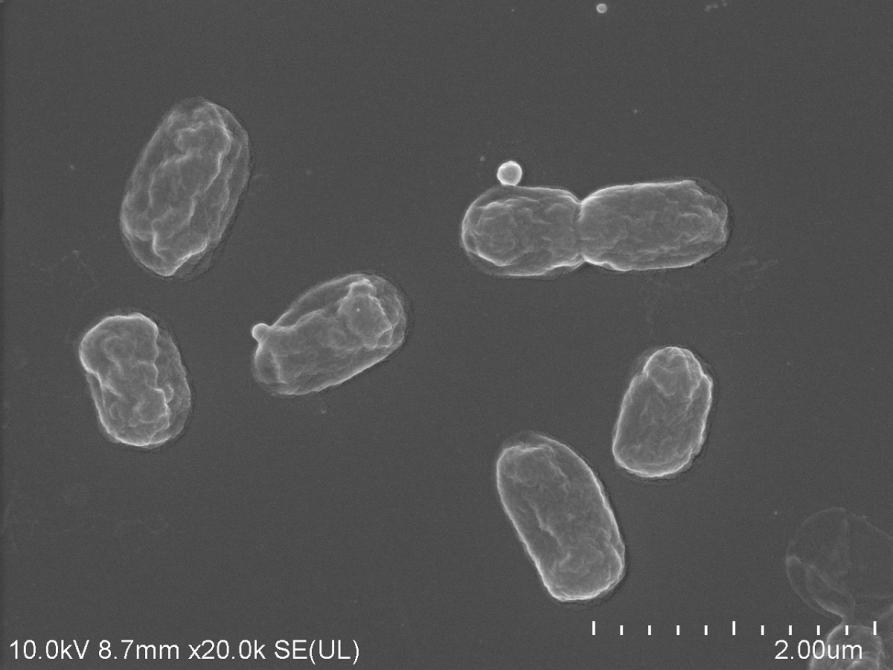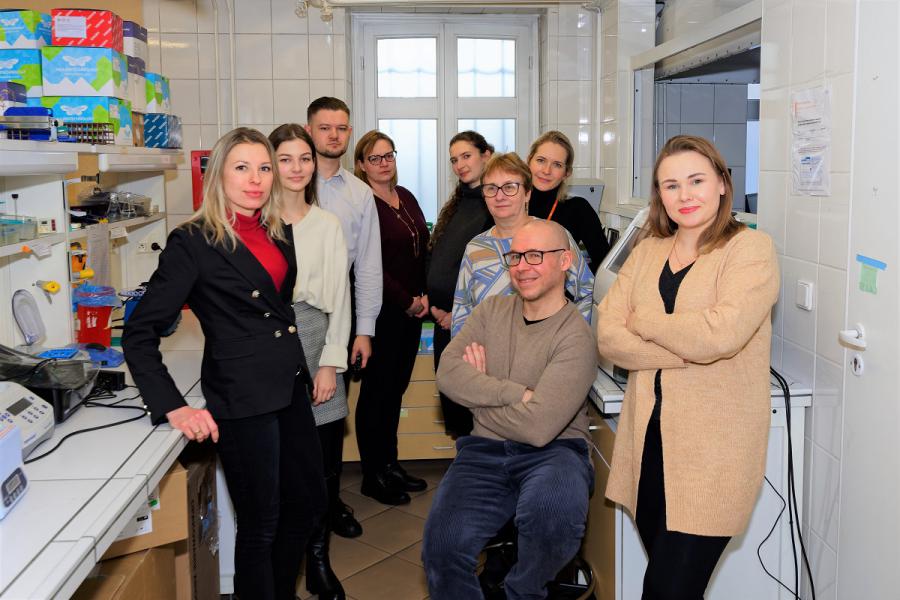| Małgorzata Kłoskowicz |
We have destroyed the environment and we are aware of it. We use e.g. huge amounts of pesticides to get rid of pathogenic fungi or bacteria. However, their long-term use has a negative impact not only on the environment, but also on humans. That’s why scientists are looking for natural, effective ways to protect crops. “We also conduct such research”, says Prof. Zofia Piotrowska-Seget from the Faculty of Natural Sciences of the University of Silesia, who, together with Katarzyna Kasperkiewicz, PhD from her team, talks about bacteria that can contribute to the creation of a biological vaccine for plants.
Scientists were interested primarily in endophytic bacteria, i.e. bacteria that colonise the inside of the plant. The relationship between endophytes and plants is symbiotic. The results of many studies show that these bacteria can bring many benefits to their host. In exchange for nutrient substrates, they produce various types of metabolites, thanks to which the plant develops better or is more resistant to abiotic and biotic stress factors. These include various pathogens.
It all started with research conducted by Katarzyna Kasperkiewicz, PhD, who analysed the mechanisms of vesicles formation by Gram-negative bacteria of the genus Yersinia, which cause various diseases in the human and animal body. “The very structure of the vesicles seemed very interesting to us. We asked ourselves whether these microscopic structures are also present in plant organisms and whether they can affect the physiology of the host. This is how the idea for a new scientific project was born the aim of which is the molecular characterisation of vesicles produced by two types of endophytic bacteria – of the genus Rhizobium and Pseudomonas. We want to check whether they stimulate the level of resistance of their host plants, and if so, how”, explains Prof. Zofia Piotrowska-Seget.
Today it is known that endophytic bacteria are present in virtually all plants. Many of them perform important functions. They produce plant hormones that stimulate growth, compounds that facilitate the uptake of certain elements and increase resistance to pathogens. It’s a very interesting relationship. Scientists know that the plant can “lure” microorganisms with which it wants to enter into symbiosis. A classic example of this type is bacteria of the genus Rhizobium. They occur in the root system and bind nitrogen. The second interesting group is the genus Pseudomonas – it was selected as the object of research due to the fact that it includes organisms that promote plant growth and produce large amounts of vesicles.

“Two selected types of bacteria were isolated from different parts of the plant. Earlier studies managed to characterise them, so we know a lot about them. This is one of the reasons for choosing these microorganisms. We want to check what benefits the vesicles produced by these endophytes bring to plants”, says Katarzyna Kasperkiewicz, PhD. She adds that the very process of their creation was already observed many years ago. However, scientists were lacking tools to check what these tiny 200 nanometre structures really are.
When the outer membrane of the microorganism folds, it forms into a vesicle, which is then released and circulated throughout the plant. It can reach those parts where the bacteria itself, due to its size, would not be able to get. It is a kind of response to the changing environment, but also a form of communication between bacteria and the plant and between microbes. One of the most important questions is whether the bacteria “decides” what goes into the vesicle, or whether various metabolic products, toxins or genetic material (fragments of DNA, RNA) are accidentally placed there.
In addition to the content of the vesicles, scientists are also studying how they move and how they affect the plant. The team wants to propose an interesting system for tracking the migration and fate of vesicles using such modern solutions as labelling with a green fluorescent protein. The research will answer the question of whether and how the plant reacts to the presence of these particular structures.
“Once we get to know all the mechanisms that interest us, we would ultimately like to stimulate the bacteria to produce vesicles with the specific content we are interested in. Then, we could introduce them to plants in the form of a vaccine to achieve a specific goal, such as the previously mentioned greater resistance to various pathogens or other stressors”, explains Katarzyna Kasperkiewicz, PhD.
The task is not easy as various particles are closed in the vesicles. First, the vesicle, the researcher adds, is sometimes like a postcard sent to other microbes with the message: I’m here! This is especially true for pathogenic microorganisms. Then a toxin or virulence factors may be found inside the vesicle. It is a very interesting form of communication. Secondly, vesicles can be like garbage bags, into which products of various processes end up: metabolites, fragments of DNA, RNA or proteins. Thirdly, they are like vaccines, because they contain substances that stimulate, for example, plant growth. Scientists from the University of Silesia are most interested in this role of vesicles.
Perhaps the plant can also send a signal to the bacteria that it needs, for example, such a growth stimulator. However, we will have to wait for an answer to this question.
“We conduct basic research. This means that our goal is to get to know and describe the mechanisms we are talking about as much as possible. Only then will it be time to try to use them in practice, although I must admit that the application potential is large”, emphasises the team leader.
The results of research conducted by the team of Prof. Zofia Piotrowska-Seget on maize and on the model Arabidopsis plant have already confirmed the possibility of stimulating the growth of both plant species through the vesicles produced by endophytic bacteria. The plans are interesting because they concern increasing crop yields and better protection of cultivated plants using natural methods that are safe for humans and the environment. Scientists saw the possibility of creating a preparation based on vesicles that could biologically stimulate the plant to grow and provide tools for effective defence against, for example, harmful microorganisms. It would therefore be a kind of vaccine that would immunise plants and at the same time not have a negative impact on the environment, as is the case of the long-term impact of pesticides.
“In science, there are already cases of using bacteria or fungi to protect plants against pathogens. The use of vesicles would therefore be another biological method that would benefit the environment and all of us”, concludes Prof. Zofia Piotrowska-Seget.
Research project ‘Molecular characterisation of outer membrane vesicles of endophytic bacteria of the genus Pseudomonas and Rhizobium and assessment of their role in stimulating the induced systemic response in plants’ (OPUS grant No. 2020/37/B/NZ8/008555) is funded by the National Science Centre. The research is carried out by a team of microbiology and environmental biotechnology composed of: Prof. Zofia Piotrowska-Seget (leader), Katarzyna Kasperkiewicz, PhD, Magdalena Noszczyńska, PhD, Małgorzata Pawlik, PhD, Monika Malicka, PhD, Małgorzata Rudnicka, PhD, Iryna Bodnaruk, Piotr Siupka, PhD and Franco Magurno, PhD. The grant is implemented as a consortium with the Maria Curie-Skłodowska University in Lublin.
Article ‘Biological vaccine for plants’ was published in the February issue of University of Silesia Magazine No. 5 (305).

The research is carried out by the microbiology and environmental biotechnology team at the Faculty of Natural Sciences of the University of Silesia | Photo by Piotr Siupka





